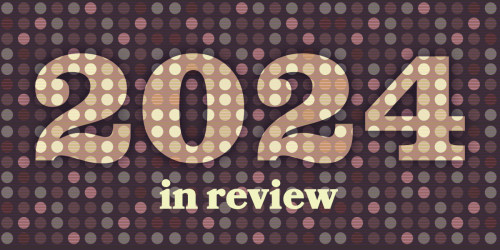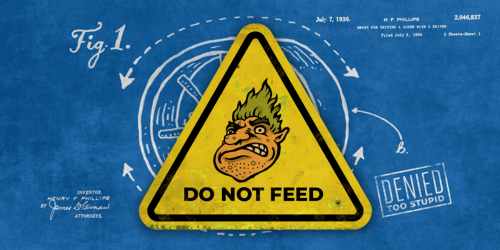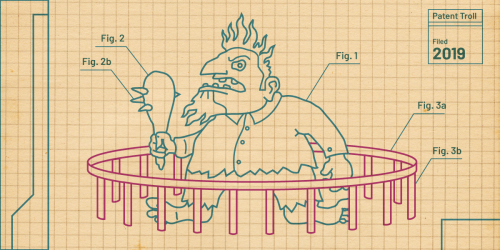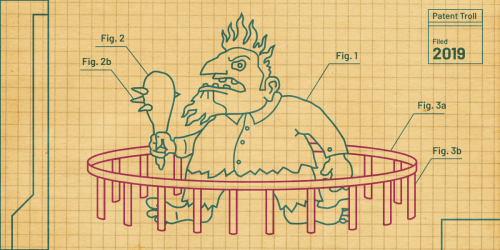 Ever wanted to own the latest in “teamwork” technology? Well, you’re in luck. On December 8, Penn State is holding a large patent auction, and one of the items is U.S. Patent 8,442,839. This patent purports to describe an improved collaborative “decision-making process.” As well as being a good example of a silly patent, this month’s winner highlights concerns with universities trying to monetize their patent portfolio. Why would a university, which presumably has a mission of promoting knowledge and innovation, sell an unsuccessful patent that has no value except to a troll?
Ever wanted to own the latest in “teamwork” technology? Well, you’re in luck. On December 8, Penn State is holding a large patent auction, and one of the items is U.S. Patent 8,442,839. This patent purports to describe an improved collaborative “decision-making process.” As well as being a good example of a silly patent, this month’s winner highlights concerns with universities trying to monetize their patent portfolio. Why would a university, which presumably has a mission of promoting knowledge and innovation, sell an unsuccessful patent that has no value except to a troll?
First, a little background. In April this year, Penn State held its first patent auction. It offered exclusive licenses to dozens of patents but only received a single bid (meaning that it likely didn’t even recover the cost of holding the auction). This is consistent with experience at other schools. Evidence shows that the vast majority of technology transfer offices lose money for their university. Selling old patents brings universities little revenue but risks contributing to the wider economic harm from patent trolling. Indeed, over 60 universities (paywall) have sold patents to infamous patent troll Intellectual Ventures.
Many, including EFF, have expressed concerns with universities selling to patent trolls. To its credit, Penn State says that it does not want to foster patent trolling. And it has included some licensing terms that will discourage trolls from buying its patents (including a six month bar on filing infringement actions). But it is difficult to see how a patent like U.S. Patent 8,442,839 would have value to anyone but a troll.
The patent, titled “Agent-based collaborative recognition-primed decision-making,” includes a single independent claim. Steps include “receiving information regarding a current situation to be analyzed,” interacting to receive “assistance in the form of assumptions or expectancies about the situation,” and using “collected information to determine whether a decision about the situation is evolving in an anticipated direction.”
The patent reads a little like what might result if you ate a dictionary filled with buzzwords and drank a bottle of tequila. A typical passage explains:
Story building also involves information gathering, but it is more than cue-driven information investigation, because the agents are still unclear about what cues to investigate. Therefore, the key is to identify a collection of cues which the team needs to pay attention to. Our model adopts a combination of two mechanisms: hypothesis exploration and experience synthesization.
In other words: learn from experience. The patent examiner originally rejected the application as not directed to patentable subject matter. Penn State responded by amending its claim to “include a team-oriented computer architecture that transforms subject matter.” In other words, it took an abstract patent and said, “Do it on a computer.”
Fortunately, the Supreme Court has put a stop to this kind of nonsense. We think Penn State’s patent would be found invalid under Alice v. CLS Bank. But even invalid patents have value to patent trolls. This is because they can use the cost of litigation to extort settlements. Indeed when patent trolls are actually forced to litigate to the merits, they lose over 75% of the time.
We urge Penn State and all universities to be more responsible. Instead of selling patents that have little value except as litigation weapons, universities should focus on true technology transfer—partnering with others to bring new technologies into the world. And universities should end their opposition to patent reform. We have a petition calling on universities to support patent reform here. Sign it now!








